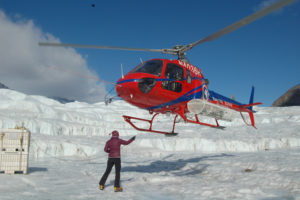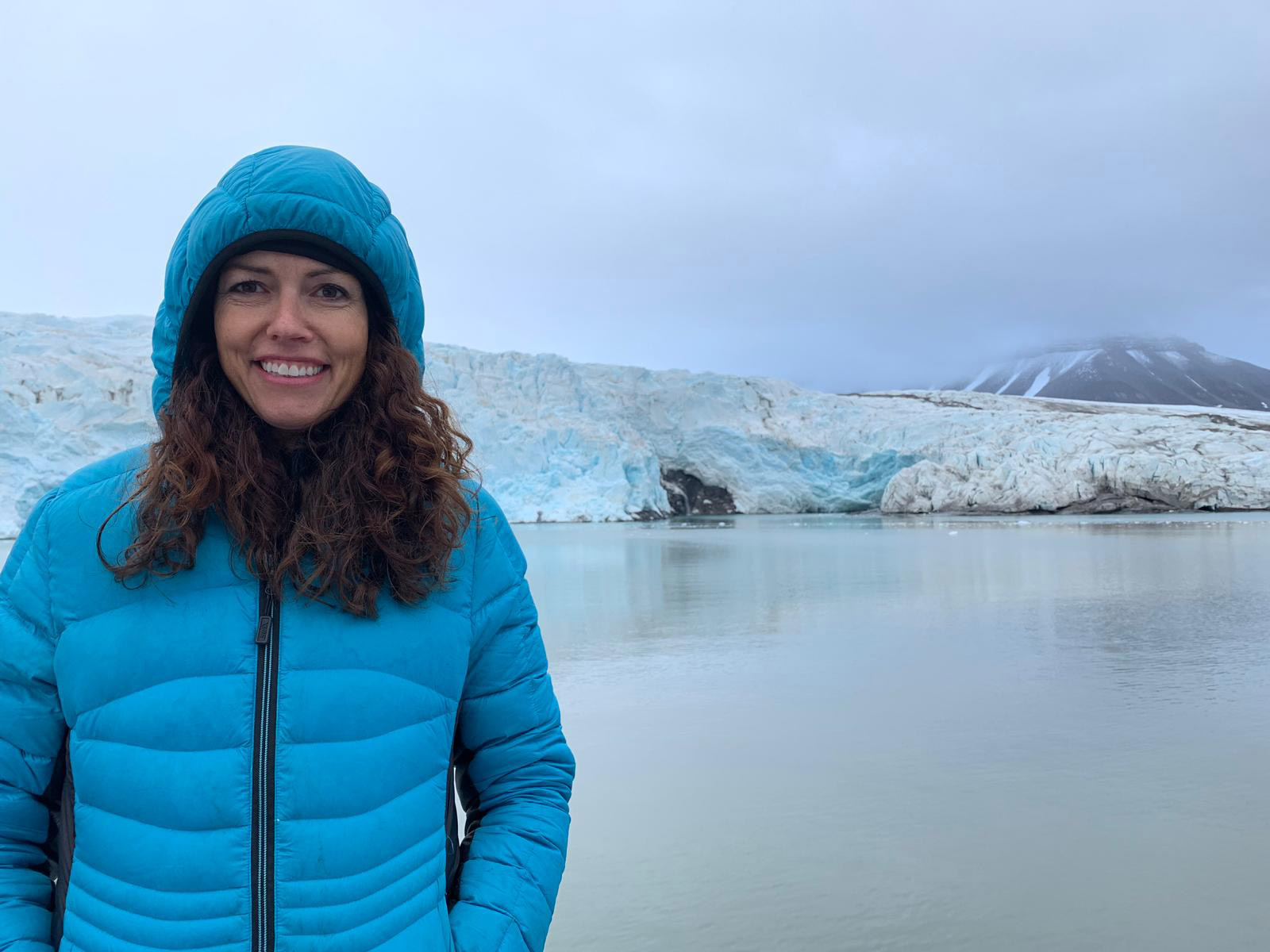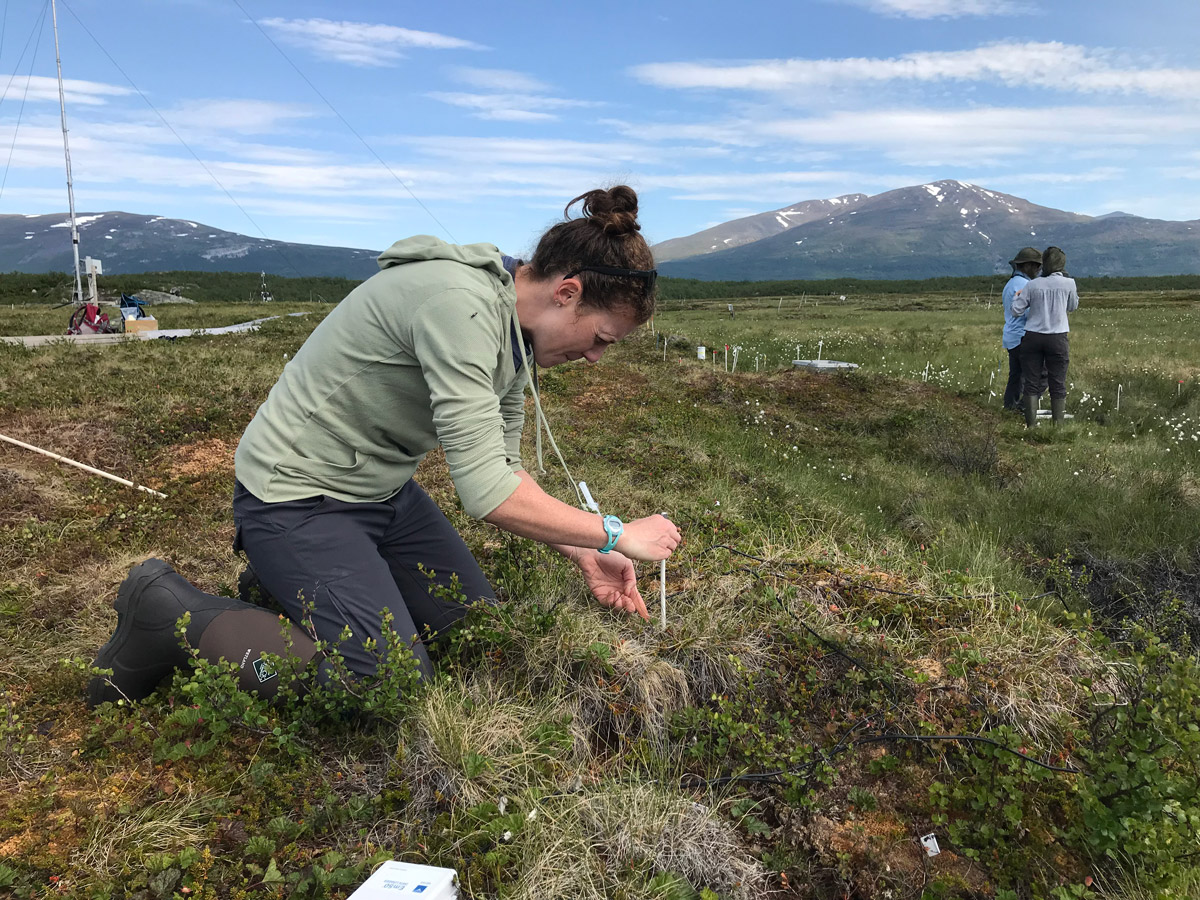By Whitney Heins | Photos courtesy of researchers
Helicopters. Giant drills. Guns. Radioactive isotopes. These might sound like the props needed for Hollywood’s next big blockbuster. But, no. They’re what’s needed for UT Knoxville research projects being conducted in extreme environments around the world.
UT scientists are spending months of their lives in bleak conditions, completely off the grid, all in the name of science. Their groundbreaking research is adding pieces to the intricate puzzle that predicts the effects of climate change on the planet. And the pieces are hidden under ground and ice in the form of tiny microscopic organisms.

Take the work of Jill Mikucki, associate professor of microbiology. Mikucki has been deployed to Antarctica 13 times, a place where temperatures average well below zero year-round. Her work requires cargo planes, helicopters and ATVs to reach the remote field sites. In blowing, icy winds, she must construct canvas tents, in which she’ll live for months at a time.
Mikucki’s research sheds light on how life can exist in dark, barren places as well as how this life contributes to climate change. In 2013, her work made history by punching through the West Antarctic Ice Sheet with a giant custom hot-water drill and retrieving the first evidence of microbial life from Subglacial Lake Whillans. Mikucki and her team uncovered how microorganisms isolated from the atmosphere for thousands of years live and grow in completely dark and cold places—holding implications for the possibility of life on other planets. A year later, Mikucki’s team found life in another bleak place, under Blood Falls, an outflow of saltwater from Antarctica’s Taylor Glacier named for its red color caused by iron-oxide.

Understanding how these microbes manage to live in stark conditions is important for predicting the effects of climate change because the tiny organisms manage to survive by liberating material from the bedrock trapped by ice. When the ice melts, these materials leak into the water, changing the water’s chemistry and affecting the ecosystem.
“It’s important to know what’s under the ice so you can better predict what will happen when you lose the ice,” says Mikucki, adding that the ice caps are 10 percent of the Earth’s terrestrial surface, yet little is known about the life there.
Mikucki does her work alongside students, passing on knowledge and samples for them to do their own work. Alicia Purcell worked in Mikucki’s lab as an undergraduate student, traveled to Antarctica as a master’s student and now runs her own Antarctic field campaign as a doctoral candidate at Northern Arizona University.
“Antarctica is a beautiful and fragile environment where we aim to understand the limits of life and the impacts of global climate change,” says Purcell (Knoxville ’12). “I was lucky to have the opportunity with Dr. Mikucki, and it propelled me to seek future opportunities to continue working there and study how microbes respond to global temperature increases.”

Mikucki’s colleague, Karen Lloyd, associate professor of microbiology, is also trying to uncover the mysteries contained in remote frozen locations. Lloyd’s latest project, funded by a $2.5 million U.S. Department of Energy grant, seeks to understand the carbon-eating activities of microbes in permafrost. Permafrost is ground that remains frozen for at least two years. Her work is located at the Arctic’s Ny Alesund, Svalbard, Norway, which, after 20,000 years of being frozen, is one of the fastest-thawing places on the planet.
“Climate change is not a future scenario. We are watching the polar ice cap melt,” says Lloyd, explaining that they had to move their field season earlier in the year in order to conduct their research because of the region’s steady warming trend.

Lloyd’s work is extremely important as the planet warms: The permafrost acts as a carbon reservoir, safely locking it away—but, as it thaws, this carbon is released, feeding carbon-eating microbes. As these microbes process the carbon, they may emit harmful greenhouse gasses such as carbon dioxide, methane or nitrous oxide—further heating up Earth.
“We are asking the basic questions of what kind of microbes are in the permafrost and what they’re capable of,” says Lloyd.
To find the answer, Lloyd’s team, which includes UT professors Tatiana Vishnivetskaya and Andrew Steen and graduate student Katie Stipes, drill into the permafrost to extract cores, which are cut, preserved and sent back to Tennessee for analysis at UT and partner Oak Ridge National Laboratory.
“I’m excited for the fieldwork with Dr. Lloyd in the Arctic because of the brotherhood that occurs when you’re working day and night to get samples prepared,” says Stipes, who has previously studied in the Arctic twice. “Being there makes you realize that we know such little about the variety in our world that we don’t even need to go to another planet to study something extreme.”

The fieldwork requires that one researcher is constantly standing watch for polar bears.
“We carry a loaded gun, sleep in houses instead of tents and always have someone on watch,” says Lloyd, who adds they’re trained in how to read polar bear behavior to know when their lives are in danger and how to avoid hurting the bears unnecessarily.
After the samples arrive back in Tennessee, the scientists analyze what kind of microbes are there—with a high possibility that the microbes will be ones researchers never knew existed—and what the carbon molecules turn into after they’re eaten by the tiny organisms.
“It’s important to understand how carbon is flowing through these systems. If the microbes convert all the carbon into carbon dioxide, that would be catastrophic,” explains Lloyd. “This knowledge can tell us the severity of the situation.”
Steven Wilhelm, the Kenneth and Blaire Mossman Professor in the department of microbiology, also studies areas under ice of which not much is known—and these areas are much closer to home. Wilhelm’s work, funded by the U.S. Department of Energy, focuses on identifying and understanding the microbial communities living in the Great Lakes, specifically Lake Erie, in the winter, as well as the role they play in the carbon cycle. In his past Great Lakes research, Wilhelm has travelled on giant ice breakers, ships with big bows that crush ice, to get to his research site to collect samples.

“Think about working in the middle of a frozen lake in minus 30-degree temperatures in 30 mph wind with ice pellets hitting your face. And the ice is thick in some spots and thin in others,” Wilhelm says. “It’s dangerous.”
For spring 2020, Wilhelm doesn’t have to work in these conditions. One reason is it’s been too warm for ice to form on the lake. So that is one aspect he and his team—which includes students and colleagues in Ohio and Canada—will study: which microbes have historically lived under the ice and what takes over as the planet warms. The work holds implications for predicting the effects of climate change as well as what humans eat.
“There are giant fields of phytoplankton called diatoms there which serve as the baseline for the food web, and Lake Erie is home to one of the most valuable freshwater fisheries in the world,” Wilhelm says. “When you start tweaking with the primary producers of the food web, you change the ecosystem quickly.”
In the past, diatoms have dominated under the ice; now they’re distributed throughout the water column. Wilhelm and his collaborators will examine how that changes the makeup of the microorganisms by collecting samples and performing RNA sequencing. Understanding what these tiny organisms are eating and emitting gives scientists the ability to better predict what will happen in the carbon cycle.
“We want to know what winter communities will look like when there is less ice, how they are using carbon dioxide and where that carbon dioxide is going,” says Wilhelm. “The Great Lakes play a large role in regulating the global carbon cycle, so understanding how to protect and preserve this resource is important.”
Elizabeth Herndon, a UT-ORNL joint faculty member in earth and planetary sciences, is putting another piece of the climate change puzzle together by peering not under the ice but into the Arctic soil.
Funded by the National Science Foundation’s Arctic Natural Sciences program, Herndon and her collaborators will head to the Arctic Circle in Alaska during the next three summers to study changes in the levels of nutrients, specifically phosphorus, and how plants and microorganisms respond to those changing levels.

“As the planet warms, environments shift. Some become warmer. Some become drier. Some become wetter. These changes impact the microbial communities in the soil,” explains Herndon. “Our project focuses on what’s happening to the availability of nutrients for the microorganisms and plants, and how they respond.”
Underfoot, there is a war of sorts for phosphorus. Plants want it. Microorganisms want it. Minerals hang on to it. As the planet gets hotter, more plants are growing, and microorganisms are becoming more active, increasing the competition for phosphorus. At the same time, iron oxide, commonly known as rust, retains phosphorus. But, as places become wetter or drier, the supply of iron oxide, and thereby phosphorus, is
changing, but it’s not known how effectively plants and microbes can compete with iron oxides for phosphorus under these different conditions.

To predict how the supply and demand of the nutrients change as the climate changes, Herndon and her collaborators will implant sensors in the soil to continually measure gas and water levels. They’ll also collect water, soil and plant samples and use chemical and spectroscopy techniques to identify what minerals and nutrients are present.
“Arctic soils store a lot of carbon in organic matter (mostly decomposing dead plants), but as they warm and thaw, they create a positive feedback to climate change because decomposition speeds up and releases more greenhouse gasses into the atmosphere. It’s a double whammy,” says Herndon.
Much like a blockbuster movie, Herndon’s work, as well as the others, seeks to head off the potential destruction facing the warming planet—one small puzzle piece at a time.



